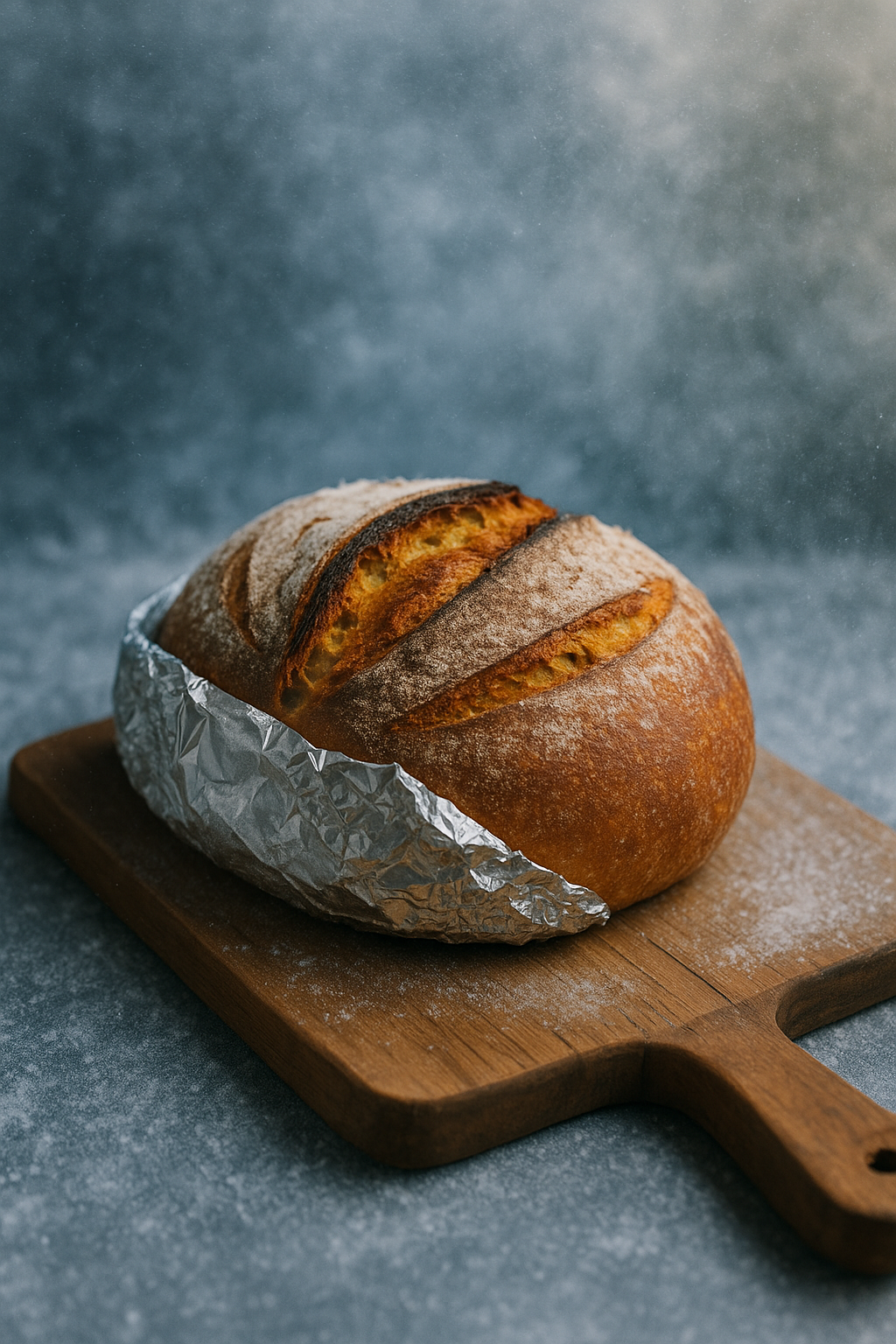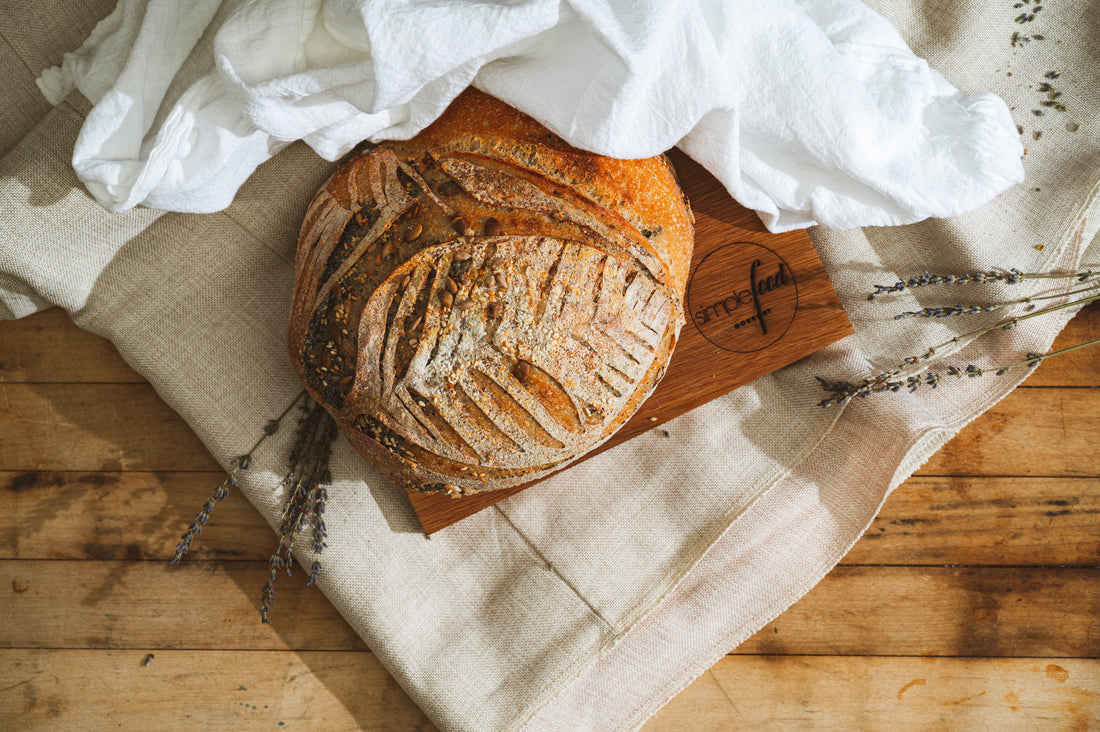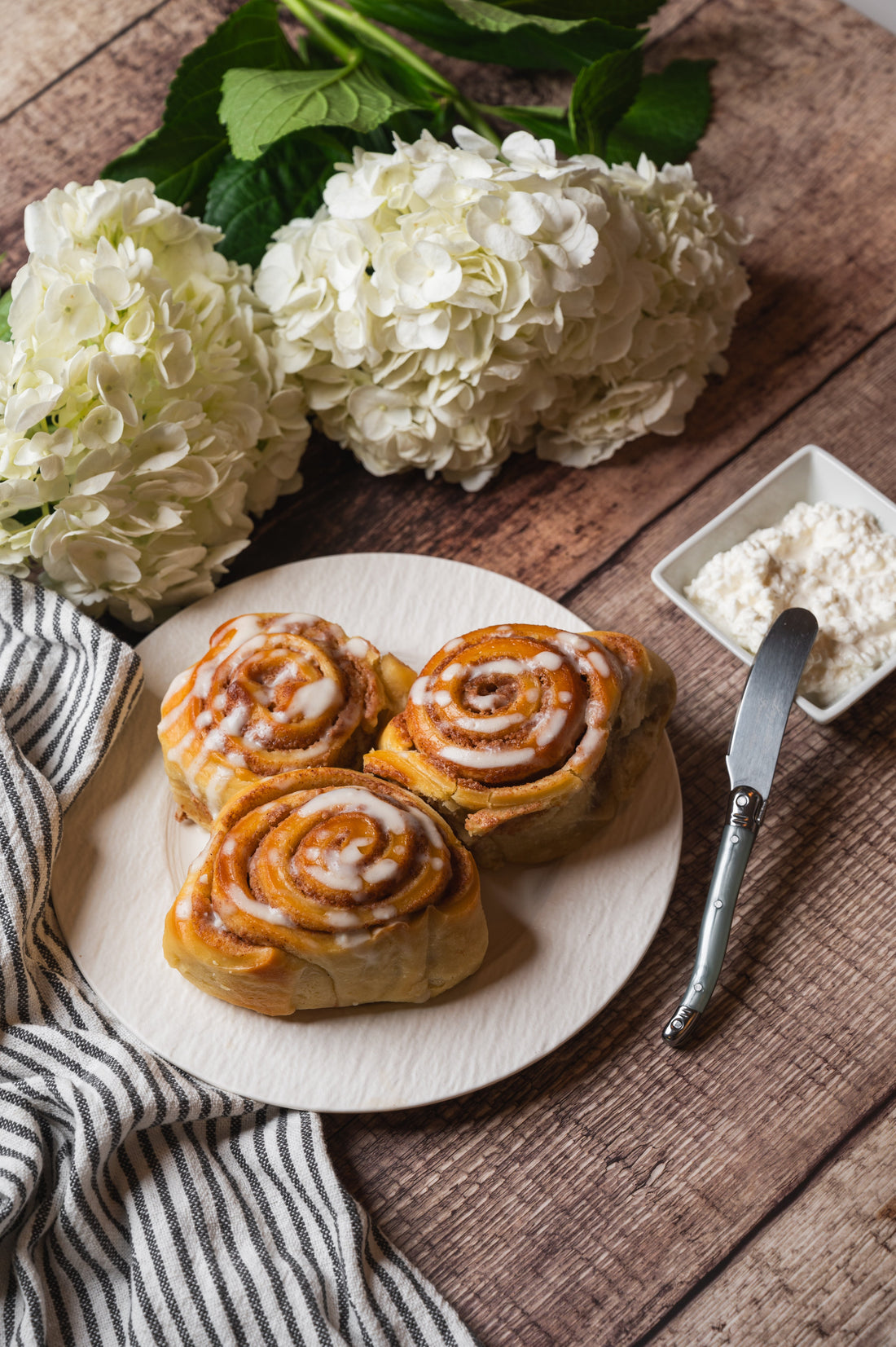News
How to Freeze Sourdough Bread – Preserve Freshness & Reduce Waste
Learn how to freeze sourdough bread the right way—whether whole or sliced—to preserve its flavor, texture, and nutrition. This step-by-step guide ensures your homemade or bakery loaf stays fresh, crisp, and ready anytime you need it.
Learn moreEinkorn Sourdough Bread – Ancient Grain, Modern Delight
Discover the benefits of einkorn sourdough—an ancient grain bread with rich flavor, easier digestibility, and superior nutrition. Learn how einkorn and sourdough fermentation combine for a wholesome, heritage-inspired loaf worth baking or savoring.
Learn morePumpkin Sourdough Bread – Warm Spice, Ancient Fermentation & Wholesome Nutrition
Enjoy the warm, earthy flavors of pumpkin sourdough bread—naturally fermented, made with real pumpkin puree, no refined sugar, and packed with wholesome nutrition. Discover its gut-friendly benefits and how to bake your own seasonal loaf.
Learn moreSourdough Cinnamon Roll Recipe – A Cozy, Tangy Twist on a Classic Treat
Make soft, tangy sourdough cinnamon rolls from scratch. This cozy recipe brings bakery-level flavor to your home kitchen.
Learn moreBest Bread for Diabetics – What to Look for and Why It Matters
Discover the best breads for diabetics, including sourdough and sprouted grain options, with tips on what to look for on the label.
Learn moreSourdough French Toast: A Brunch Classic with a Tangy Twist
Upgrade your brunch with sourdough French toast—crispy, tangy, and full of flavor. Get the recipe, tips, and topping ideas for the perfect meal.
Learn moreHow to Store Sourdough Bread for Maximum Freshness
Learn the best ways to store sourdough bread, including why Simple Food Gourmet always freezes it to lock in freshness and flavor.
Learn moreWhat is SOURDOUGH?
Is the oldest way of making bread, and uses naturally occurring wild yeast and lactic acid bacteria. This gives a distinctive & special taste with good nutritional value and digestability of the bread. The french call it Levain and, Spanish & Hispanic call it Masa Madre. • HEALTH BENEFITS of Sourdough Our bread is between 36 to 48 hours of cold fermentation process. This facilitates a remarkable change in the flour wich in turn transforms the bread, resulting in increasing the nutrients and nourishing for us and for our microbiota too. Studies demonstrate that this long fermentation process resulted in a loaf that was digested more slowly, causing less of spikes in blood sugar levels.
Learn moreDOES SOURDOUGH BREAD HAVE GLUTEN?
Sourdough bread contains gluten, since it is made from wheat flour, rye or other grains that contain this protein. However, some people with gluten sensitivity or celiac disease may find sourdough bread more tolerable compared to other types of bread. Sourdough is a combination of flour and water fermented by beneficial bacteria and yeast. During the fermentation process, these bacteria and yeasts break down some of the gluten in the bread. This can make sourdough bread easier to digest for some people, especially those with gluten sensitivities. Additionally, the long fermentation used in making sourdough bread allows the enzymes present in the sourdough to further break down the gluten, potentially reducing the amount of gluten present in the final bread. This can make sourdough bread softer on some people's digestive systems. However, it is important to note that sourdough bread is not gluten-free and is not suitable for people with celiac disease, as even small amounts of gluten can trigger adverse reactions in these people. If you have any concerns about your gluten tolerance, I would recommend consulting with a doctor or nutritionist for a proper and personalized evaluation.
Learn more











